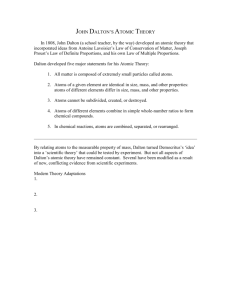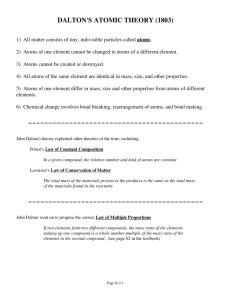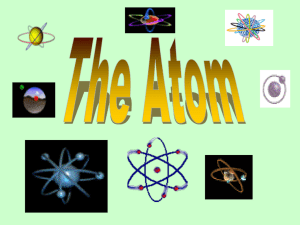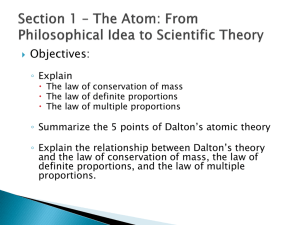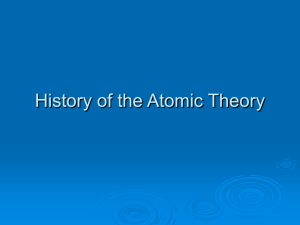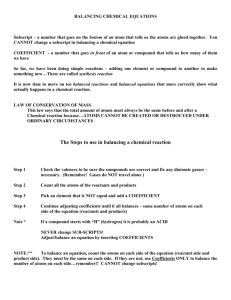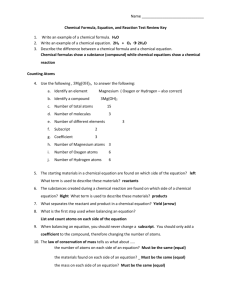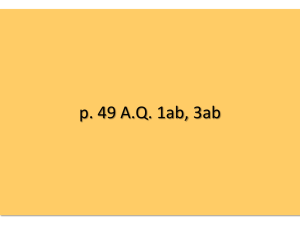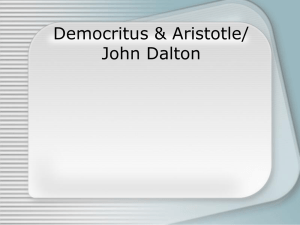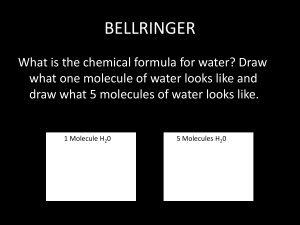CHAPTER 3 REVIEW - Effingham County Schools
advertisement
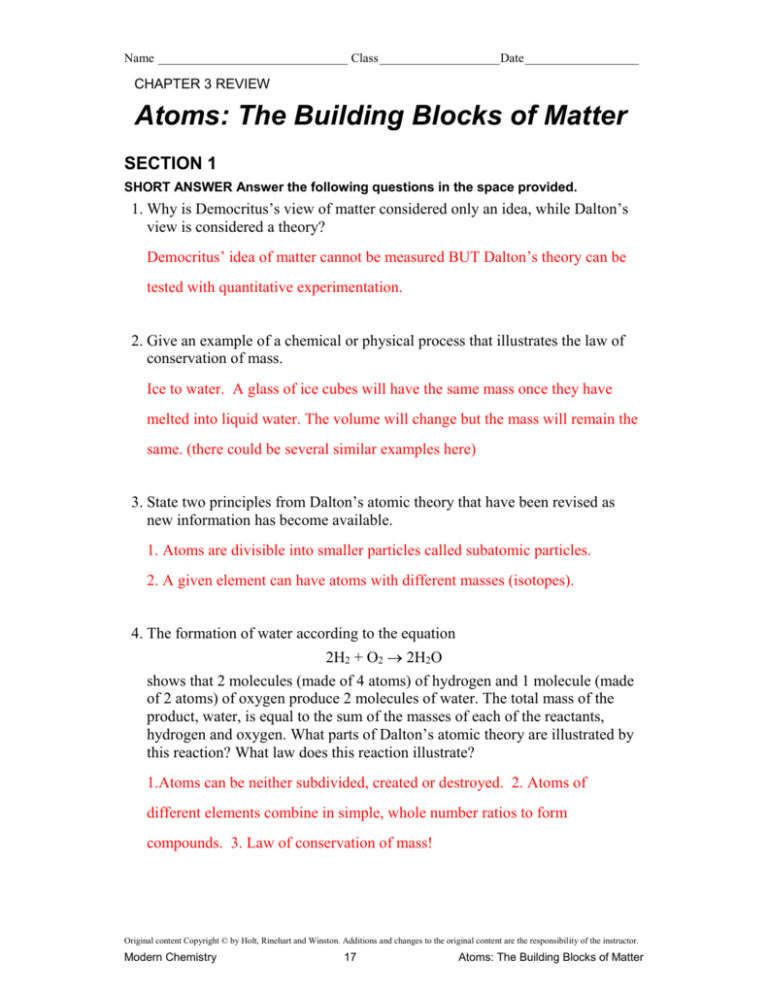
Name ______________________________ Class ___________________ Date __________________ CHAPTER 3 REVIEW Atoms: The Building Blocks of Matter SECTION 1 SHORT ANSWER Answer the following questions in the space provided. 1. Why is Democritus’s view of matter considered only an idea, while Dalton’s view is considered a theory? Democritus’ idea of matter cannot be measured BUT Dalton’s theory can be tested with quantitative experimentation. 2. Give an example of a chemical or physical process that illustrates the law of conservation of mass. Ice to water. A glass of ice cubes will have the same mass once they have melted into liquid water. The volume will change but the mass will remain the same. (there could be several similar examples here) 3. State two principles from Dalton’s atomic theory that have been revised as new information has become available. 1. Atoms are divisible into smaller particles called subatomic particles. 2. A given element can have atoms with different masses (isotopes). 4. The formation of water according to the equation 2H2 + O2 2H2O shows that 2 molecules (made of 4 atoms) of hydrogen and 1 molecule (made of 2 atoms) of oxygen produce 2 molecules of water. The total mass of the product, water, is equal to the sum of the masses of each of the reactants, hydrogen and oxygen. What parts of Dalton’s atomic theory are illustrated by this reaction? What law does this reaction illustrate? 1.Atoms can be neither subdivided, created or destroyed. 2. Atoms of different elements combine in simple, whole number ratios to form compounds. 3. Law of conservation of mass! Original content Copyright © by Holt, Rinehart and Winston. Additions and changes to the original content are the responsibility of the instructor. Modern Chemistry 17 Atoms: The Building Blocks of Matter Name ______________________________ Class ___________________ Date __________________ SECTION 1 continued PROBLEMS Write the answer on the line to the left. Show all your work in the space provided. 5. 16 g ______________ If 3 g of element C combine with 8 g of element D to form compound CD, how many grams of D are needed to form compound CD2? 8 g X (2) = 16 g We multiply by 2 because we now want 2 elements of D. 6. A sample of baking soda, NaHCO3, always contains 27.37% by mass of sodium, 1.20% of hydrogen, 14.30% of carbon, and 57.14% of oxygen. a. Which law do these data illustrate? Law of Definite Proportions ________________________________________ b. State the law. A chemical compound contains the same proportions of elements by mass regardless of the size of the sample or source of the compound 7. Nitrogen and oxygen combine to form several compounds, as shown by the following table. Compound Mass of nitrogen that combines with 1 g oxygen (g) NO NO2 NO4 1.70 0.85 0.44 Calculate the ratio of the masses of nitrogen in each of the following: _2.0____ a. NO NO 2 __2.0___ b. NO 2 NO 4 __4.0____ c. NO NO 4 d. Which law do these data illustrate? Law of Multiple Proportions ________________________________________ Original content Copyright © by Holt, Rinehart and Winston. Additions and changes to the original content are the responsibility of the instructor. Modern Chemistry 18 Atoms: The Building Blocks of Matter
